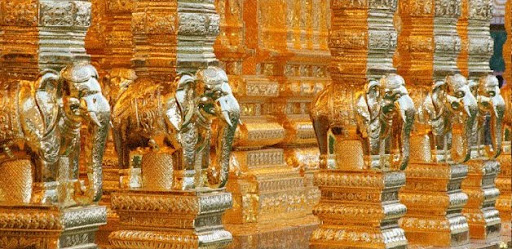
Chandrasekhar (Chandra) was born in Lahore, British India, into a Tamil Hindu family, the third of ten children to Sita Balakrishnan, and Subrahmanya, a senior officer in the Indian Audits and Accounts Department.[4] Subrahmanya was posted in Lahore as the Deputy Auditor General of the Northwestern Railways at the time of Chandra's birth. His mother tongue is Tamil.
Chandra's father was also an accomplished Carnatic music violinist who had authored several books on musicology. His mother was devoted to intellectual pursuits and had translated Henrik Ibsen's A Doll's House into Tamil. She is credited with arousing Chandra's intellectual curiosity early on. Chandra's father's brother, physicist C. V. Raman is also a Nobel laureate in physics.
Chandra was tutored at home initially through middle school and later attended the Hindu High School, Triplicane, Madras, British India during the years 1922-25. Subsequently, he studied at Presidency College from 1925 to 1930, obtaining his bachelor's degree, B.Sc. (Hon.), in physics in June 1930. In July 1930, Chandrasekhar was awarded a Government of India scholarship to pursue graduate studies at the University of Cambridge, where he was admitted to Trinity College and became a research student of Professor R. H. Fowler. On the advice of Prof. P. A. M. Dirac, as part of his graduate studies, Chandra spent a year at the Institut for Teoretisk Fysik in Copenhagen, where he met Prof. Niels Bohr.
In the summer of 1933, Chandrasekhar was awarded his Ph.D. degree at Cambridge, and the following October, he was elected to a Prize Fellowship at Trinity College for the period 1933-37. During this time, he made acquaintances with Sir Arthur Eddington and Professor E. A. Milne.
In September 1936, Chandrasekhar married Lalitha Doraiswamy, who he had met as a fellow student at Presidency College, Madras, and who was a year junior to him. In his Nobel autobiography, Chandrasekhar wrote, "Lalitha's patient understanding, support, and encouragement have been the central facts of my life."
Career
The following year in January 1937, Chandrasekhar was recruited to the University of Chicago faculty as Assistant Professor by Dr. Otto Struve and President Robert Maynard Hutchins. He was to remain at the university for his entire career, becoming Morton D. Hull Distinguished Service Professor of Theoretical Astrophysics in 1952 and attaining emeritus status in 1985.
Chandrasekhar did some work at Yerkes Observatory in Williams Bay, Wisconsin, which was run by the University of Chicago. After the Laboratory for Astrophysics and Space Research (LASR) was built by NASA in 1966 at the University, Chandrasekhar occupied one of the four corner offices on the second floor. (The other corners housed John A. Simpson, Peter Meyer, and Eugene N. Parker.) Chandrasekhar lived at 4800 Lake Shore Drive, about a mile from the University, after the high-rise apartment complex was built in the late 1960s.
During World War II, Chandrasekhar worked at the Ballistic Research Laboratories at the Aberdeen Proving Ground in Maryland. While there, he worked on problems of ballistics; for example, two reports from 1943 were titled, On the decay of plane shock waves and The normal reflection of a blast wave.[5]
Chandrasekhar developed a style of working continuously in one specific area of physics for a number of years; consequently, his working life can be divided into distinct periods. He studied stellar structure, including the theory of white dwarfs, during the years 1929 to 1939, and subsequently focused on stellar dynamics from 1939 to 1943. Next, he concentrated on the theory of radiative transfer and the quantum theory of the negative ion of hydrogen from 1943 to 1950. This was followed by sustained work on hydrodynamic and hydromagnetic stability from 1950 to 1961. In the 1960s, he studied the equilibrium and the stability of ellipsoidal figures of equilibrium, but also general relativity. During the period, 1971 to 1983 he studied the mathematical theory of black holes, and, finally, during the late 80s, he worked on the theory of colliding gravitational waves.[5]
From 1952 to 1971 Chandrasekhar was editor of the Astrophysical Journal.
During the years 1990 to 1995, Chandrasekhar worked on a project devoted to explaining the detailed geometric arguments in Sir Isaac Newton's Philosophiae Naturalis Principia Mathematica using the language and methods of ordinary calculus. The effort resulted in the book Newton's Principia for the Common Reader, published in 1995. Chandrasekhar was an honorary member of the International Academy of Science.
Chandrasekhar died of heart failure in Chicago in 1995, and was survived by his wife, Lalitha Chandrasekhar. In the Biographical Memoirs of the Fellows of the Royal Society of London, R. J. Tayler wrote: "Chandrasekhar was a classical applied mathematician whose research was primarily applied in astronomy and whose like will probably never be seen again."[6]
Nobel prize
He was awarded the Nobel Prize in Physics in 1983 for his studies on the physical processes important to the structure and evolution of stars. Chandrasekhar accepted this honor, but was upset that the citation mentioned only his earliest work, seeing it as a denigration of a lifetime's achievement.



















